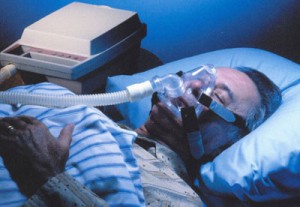Sleep Apnea Increases in the US Population
Thursday, April 18, 2013 To anyone involved in bariatric care, screening for sleep apnea should be an essential part of clinical assessment. Thus, not surprisingly, a substantial proportion of bariatric patients are diagnosed with this condition and receive (often life-changing) therapy.
To anyone involved in bariatric care, screening for sleep apnea should be an essential part of clinical assessment. Thus, not surprisingly, a substantial proportion of bariatric patients are diagnosed with this condition and receive (often life-changing) therapy.
But how common is this condition in the overall population?
This question is addressed in a paper by Peppard and colleagues published in the American Journal of Epidemiology.
Based on data in bout 1,500 participants from the Wisconsin Sleep Cohort Study, an ongoing community-based study established in 1988 with participants randomly selected from an employed population of Wisconsin adults, prevalence of sleep-disordered breathing in the United States for the periods of 1988-1994 and 2007-2010 was estimated using NHANES data for age, sex, and body mass index.
Based on these estimates, the current prevalence of moderate to severe sleep-disordered breathing (apnea-hypopnea index, measured as events/hour, ≥15) in the US are 10% among 30-49-year-old men; 17% among 50-70-year-old men; 3% among 30-49-year-old women; and 9% among 50-70 year-old women.
Not only do these estimated prevalence rates represent a substantial increase over the last 2 decades but, as expected even higher rates of sleep apnea are seen in the more obese section of the population.
Thus, sleep apnea is certainly a condition that will require a lot of attention both in terms of diagnostics and management.
AMS
Edmonton, Alberta
![]() Peppard PE, Young T, Barnet JH, Palta M, Hagen EW, & Hla KM (2013). Increased Prevalence of Sleep-Disordered Breathing in Adults. American journal of epidemiology PMID: 23589584
Peppard PE, Young T, Barnet JH, Palta M, Hagen EW, & Hla KM (2013). Increased Prevalence of Sleep-Disordered Breathing in Adults. American journal of epidemiology PMID: 23589584
.


